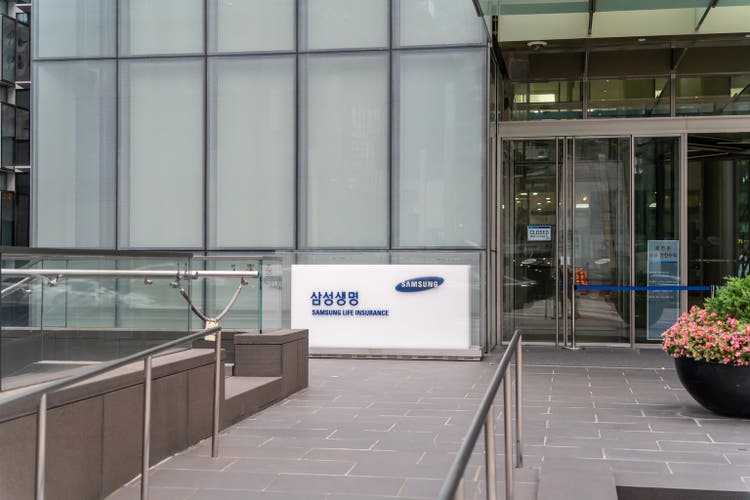
Lee Hyuck/iStock Editorial via Getty Images
Samsung Electronics (OTCPK:SSNLF) said it plans to focus on producing high-end chips and was making progress on a supply deal with a major customer, while reporting its third quarter results.
Third quarter revenue for the whole group surged about 17.3% year-over-year to KRW79.10T, while operating profit soared about 277.7% year-over-year to KRW9.18T. The operating profit was slightly above the company’s preliminary estimate of KRW9.1T ($6.74B) which it flagged earlier this month, which was below market expectations at the time.
Compared to the second quarter of 2024, revenue rose 7%. Meanwhile, operating profit fell nearly 12%, largely due to one-off costs, including the provision of incentives in the Device Solutions Division, according to Samsung.
Memory Business: The Device Solutions (DS) unit saw revenues grow 78% year-over-year to KRW29.27T. Out of this, Memory business generated KRW22.27T, soaring 112% year-over-year, and 2% quarter-over-quarter.
The company said that for the Memory Business, demand for AI and conventional servers was strong, as major datacenter and technology companies continued to invest. However, mobile demand was relatively soft due to inventory adjustments by some customers, and the supply-demand situation was impacted somewhat by the increasing supply of legacy products in the China market.
“While there was a delay in commercializing HBM3E sales as we had flagged earlier, we have made meaningful progress in the product’s qualification test process with a major customer,” said Samsung Executive Vice President Jaejune Kim on the company’s earnings call.
Samsung did not disclose the major client, but analysts have said the qualification test has been conducted by Nvidia (NVDA), Reuters reported.
Memory business Outlook: For the fourth quarter, the demand trends experienced in the previous quarter are expected to continue, according to Samsung.
For DRAM, the company plans to expand sales in line with the increase in High Bandwidth Memory, or HBM, capacity, advance the transition to 1b nanometer for server DDR5 and actively expand the sales portion of high-density modules based on 32Gb DDR5.
Samsung noted that in 2025, datacenter and enterprise investments are likely to remain strong in relation with AI, and build demand for conventional servers, in addition to AI servers, is expected to be steadily strong.
System LSI Business: The unit posted modest sales growth, but earnings declined due to increased one-off costs, according to Samsung. System-on-chip (SoC) shipments increased as flagship products were adopted for new models by a major customer.
In the fourth quarter, supply of the Exynos 2400 will continue to expand with higher customer adoption, but weak demand for image sensors is expected to continue.
Whereas in 2025, the pace of on-device AI is expected to remain strong, and the company will focus on capturing opportunities in areas such as SoCs and cameras. The unit plans to concentrate on supplying SoCs for flagship products of a major customer while preparing for next-generation 2nm product.
Foundry Business: The unit saw its overall earnings decline versus the previous quarter due to the impact of one-off costs. But the business met its order targets — particularly in sub-5nm technologies — and released the 2nm GAA process design kit, enabling customers to proceed with their product designs.
Foundry Outlook: Samsung said that while mobile and PC demand may remain weak in the fourth quarter, high performance computing, or HPC, and AI-related demand will continue to be robust. The unit aims to acquire customers by improving the process maturity of its 2nm GAA technology.
For 2025, the overall foundry market is expected to show double-digit growth, driven by HPC and AI applications in advanced technology nodes.
Digital eXperience (DX): Sales from the DX segment rose 2% year-over-year to KRW44.99T.
The MX and Networks businesses posted KRW 30.52T revenue in the third quarter. The MX Business recorded sequential growth in both revenue and operating profit, driven by the launch of new smartphone, tablet and wearable products.
Overall market demand for smartphones grew modestly as residual effects of inflation slowed the recovery in consumer spending, the company noted.
In the fourth quarter, seasonal factors are expected to lead to sequential growth in the smartphone market. The MX Business will continue to maintain solid sales of its AI smartphones, such as foldables and the S24 series, the company added.
Samsung Display Corporation (SDC): The unit’s revenue fell 3% year-over-year to KRW8T. For the mobile display business, SDC achieved sequential improvements in sales and profits due to product launches of major customers.
Overall Outlook:
Samsung said that in the fourth quarter, memory demand for mobile and PC may encounter softness, but growth in AI will keep demand at robust levels.
The company added that it will concentrate on driving sales of HBM and high-density products.
The Foundry Business aims to increase order volumes by enhancing advanced process technologies.
The company noted that its Samsung Display Corporation expects the demand of flagship products from major customers to continue, while maintaining a conservative outlook on its performance.
The Device eXperience Division will continue to focus on premium products, but sales are expected to decline slightly compared to the previous quarter, Samsung added.
For 2025, the DS Division will address demand for products based on advanced technologies and high products such as HBM and server SSDs. In addition, Samsung plans to use the mass production on the 2 nanometer Gate-All-Around, or GAA, process to win new clients.
